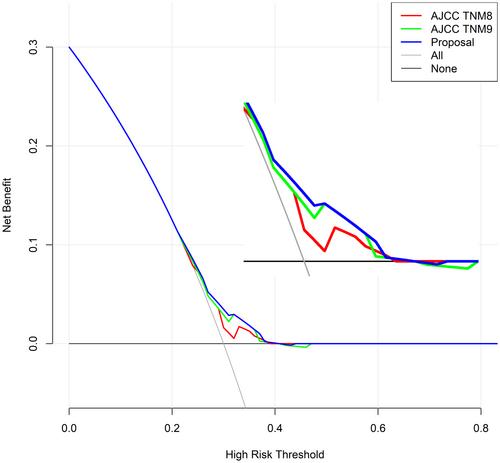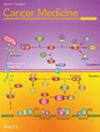Comparison of the TNM9th and 8th editions for localized and locally advanced anal squamous cell carcinoma treated nonsurgically and proposal of a new stage grouping system
Abstract
Objective
To compare the survival discrimination of the TNM9th and 8th editions for localized and locally advanced anal squamous cell carcinoma (ASCC) treated nonsurgically and suggest a simple revised staging system with data from the Surveillance, Epidemiology, and End Results (SEER) database.
Methods
Overall survival (OS) was the primary endpoint. Survival comparisons between the T and N stages and the different staging systems were performed using the Kaplan–Meier method and log-rank test, followed by correlation analysis and variable importance analysis (VIA). Additionally, multivariate analysis was employed to identify significant predictors, which were further visualized using a nomogram. Finally, calibration curve, C-index, and decision curve analysis (DCA) were applied to assess the performance of the different staging systems.
Results
A total of 5384 patients with ASCC were analyzed, revealing superior discrimination OS by the TNM9th edition compared to that by the TNM8th edition. Multivariate analysis identified the T and N stages as significant OS predictors (all p < 0.001). However, ambiguity persisted in stage III subgroups within the TNM9th edition, showing OS times of 102 months for stage IIIA disease, 88 months for stage IIIB disease, and 128 months for stage IIIC disease (all p > 0.05). Correlation analysis demonstrated an increased correlation for the T stage between the TNM8th and 9th editions (ρ value from 0.7 to 0.89), while the N stage correlation decreased (ρ value from 0.84 to 0.56). VIA and the prognostic nomogram highlighted the greater importance of the T stage over the N stage. Based on these findings, a new staging system was developed, and its clinical utility was confirmed through calibration curves, C-index values (from 0.598 to 0.604), and DCAs.
Conclusions
Our new staging system exhibited slightly better prognostic value compared to the TNM9th staging systems for nonmetastatic ASCC and warrants further validation.


 求助内容:
求助内容: 应助结果提醒方式:
应助结果提醒方式:


